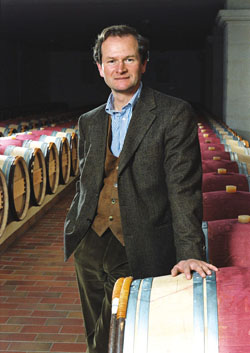Winegrower Bordeaux
Château MarjosseThe Entre-deux-Mers region, so wisely named “Little Tuscany” This area is completely encircled from north to south, nestled between the Dordogne and the Garonne, fed by its tributary the Lot, which stems from the heart of the Lozère. The Entre-deux-Mers region, so wisely named “Little Tuscany”, remains quite unique and is jealously protected by its inhabitants. You belong here or you don’t!
This area is completely encircled from north to south, nestled between the Dordogne and the Garonne, fed by its tributary the Lot, which stems from the heart of the Lozère. The Entre-deux-Mers region, so wisely named “Little Tuscany”, remains quite unique and is jealously protected by its inhabitants. You belong here or you don’t!Envisage the natural heritage of the Entre-deux-Mers region, its advantageous navigable waterways that border historical medieval fortified towns dotted here and there, its villages listed amongst UNESCO’s World Heritage sites and its listed buildings … Upon slopes, plateaus, hills incised by numerous valleys, dug out by small tributaries that spring from Aquitaine’s two main waterways, vines stretch as far as the eye can see.
Some people, even wine enthusiasts, are not necessarily aware of the fifteen appellations that constitute the Entre-deux-Mers as a whole, but the most well-known of them all, reputed for its dry, lively white wines, is certainly the one which bears the name of this region! The Entre-deux-Mers cultivates a certain speciality in producing white wines, due to its basic geological assets, possessing gravelly-limestone soils, upon which Sémillon, Sauvignon, Muscadelle and even Ugni Blanc grape varieties are planted. But the variety of soils and sub-soils associated with such a complex landscape provides a diversity of terroirs … These are favourable for producing red wines, that are regrettably not sufficiently well-known, but highly prized for the complexity of their aromas, their deep, vivid colour, as well as the concentration and elegance of their tannins.
At Château Marjosse the land possesses yet another specific feature, known locally as “la Boulbène”, a silty-clayey texture that has developed on ancient alluvions. The fertility of these soils no longer needs to be proved, because, by chance, they are also found in Saint-Emilion, a terroir that is extremely familiar to the man who manages “Cheval Blanc” …. Pierre Lurton.

Assisted in this transformation by Consultant-Oenologist Pascal Poussevin, whose recommendations range from vine growing to wine-making, Pierre Lurton’s estate has now reached its cruising speed … Beyond the fabulous adventures he experiences in his role as manager of Châteaux d’Yquem, Cheval Blanc, as well as estates in South Africa, Latin America and in Australia … it is undoubtedly with “the salt of this land here in the Entre-deux-Mers” that his years of quest for perfection will be revealed. Château Marjosse is naturally drawing full advantage from the inevitable improvements bestowed by its owner, who, like ‘Sade’, could say: “The past inspires me, the present stimulates me and I’m impatient to discover the future …”
Pierre LURTON
Château MARJOSSE
33420 TIZAC-de-CURTON
Tél. : 05 57 74 94 66
Fax : 05 57 84 64 61